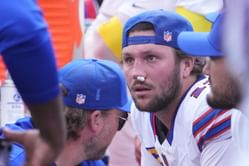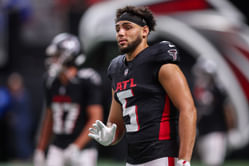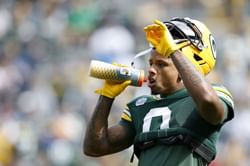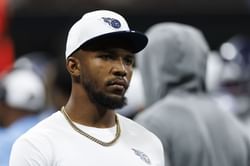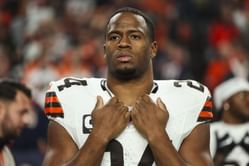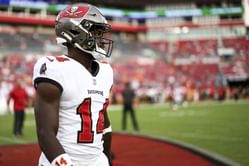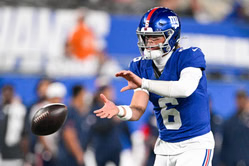
The National Football League (NFL) is an American sport league for football in the country. 32 teams in the league are split into two conferences. Each team plays 16 games during the course of the NFL season's 17 weeks, and there is an additional week before the playoffs. The Super Bowl, one of the world's most popular athletic events, features the top teams from each conference in competition.
Importance of Player Health and Safety in the NFL
For a number of reasons, it is crucial for NFL players to maintain their health and safety. First off, players' health and wellbeing may be negatively impacted by injuries over time. Numerous NFL players have disclosed that injuries they experienced over their careers have left them with chronic pain, memory loss, and other health problems. These wounds can occasionally be so bad that they result in long-term disability.
Second, NFL players' careers might suffer significantly from injuries. A player might be forced to miss a few games or possibly the entire season due to an injury, depending on its severity. This may affect the player's efficiency as well as their prospective earnings and future employment opportunities.
Thirdly, injuries might have a detrimental effect on a team's performance. Injuries to prominent players can have a big impact on a team's ability to win games and contend for championships.
Last but not least, the NFL has come under more scrutiny recently over player safety and the long-term ramifications of brain injuries. In order to lower the danger of injuries and preserve the long-term viability of the sport, it is crucial for players to take their personal health and safety seriously. The league has put different procedures in place to increase player safety.
Key Injuries in the NFL and Impact on Players’ Career
Injuries of all kinds occur frequently in the NFL. Some of the common injuries include:
Concussions: When the brain is violently jostled inside the skull, a concussion, a type of traumatic brain injury, results. NFL players frequently sustain concussions, which can have detrimental long-term implications on their health and wellbeing.
Knee Injuries: ACL (anterior cruciate ligament) tears are extremely common knee injuries in the NFL. The players' careers may be ended by these injuries.
Shoulder Injuries: Shoulder dislocations and separations are frequent in the NFL. The player's ability to throw, catch, or tackle may be hampered by these ailments.
Ankle Injuries: NFL players frequently get ankle sprains and fractures, especially when playing on turf fields.
In the NFL, injuries can significantly affect a player's career. A player might be forced to miss a few games or possibly the entire season due to an injury, depending on its severity. Players' careers can often be ended by injuries.
For instance, Dallas Cowboys quarterback Dak Prescott sustained a complex fracture and right ankle dislocation in 2020. Prescott was out for the remainder of the season due to the injury, which necessitated surgery. Although a full recovery is anticipated, the injury can have a long-term effect on his career.
Another example is former linebacker Chris Borland of the San Francisco 49ers, who left the NFL after just one season owing to worries about the long-term repercussions of head injuries. A discussion concerning player safety and the potential long-term ramifications of brain injuries in the NFL was prompted by Borland's decision to leave the league early.
Injury Prevention and Rehabilitation
NFL players can employ a variety of tactics to avoid injuries, such as appropriate nutrition, stretching, and fitness. Stretching helps prevent muscular sprains and other injuries, while strength training and conditioning can help you become more fit. A good diet can lower the chance of injury by giving the body the nutrition it needs to be strong and healthy.
To help athletes recover from injuries, physical therapy, ice, heat, and massage therapy are frequently employed. The NFL has recently embraced technological improvements to both prevent and treat injuries. Wearables, such fitness trackers and smartwatches, give athletes and coaches access to real-time information on physical activity and health, helping them to spot potential injury risks and modify their training regimens accordingly. Players may practice without worrying about being hurt thanks to virtual reality (VR) training, which simulates game circumstances. Injuries are also treated with the help of medical innovations like laser and stem cell therapy.
Players can help to lower the chance of injury and ensure their long-term health and safety during their NFL careers by utilizing the most recent methods and tools.
One player who should be commended for his longevity and health is Tom Brady. Widely regarded as the GOAT, Tom Brady played over two decades in the NFL. This in itself is a testament to how well he has maintained his health and prevented himself from major injuries.
League Response
In the NFL, player health and safety are of vital concern. Player safety has come under more attention recently, especially in light of concussions and other head problems. The NFL has put in place a number of steps to enhance player safety, including new regulations, better tools, and raised awareness and education levels for athletes, coaches, and medical personnel.
The Head, Neck, and Spine Committee, which focuses on studying and preventing head and neck injuries, was also founded by the NFL in 1994. The NFL Player Care Foundation was established by the league in collaboration with the NFL Players Association (NFLPA), and it offers retired players financial, emotional, and medical support.
The NFL has made over 50 rule changes to take into consideration player health and safety. A recent rule change was the helmet-to-helmet rule which prevented players from using helmets as a tool to tackle their opponents. Tripping is now considered to be a personal foul resulting in a 15-yard penalty.
There are many other similar changes that have taken place to ensure that player health and injury prevention is given utmost priority in the NFL. We can expect many more rule changes and accommodations made towards the same over the next few years.
Injuries have always been part of the NFL and have a major effect on individuals' careers and the league as a whole. A few examples of the kinds of ailments that might keep athletes from playing and have a detrimental effect on their performance include concussions, knee problems, and shoulder injuries.
Emphasis has been placed on injury prevention and recovery methods, and the league has enacted additional rules and regulations governing player safety.
Despite these initiatives, injuries in the NFL continue to be a major problem and are likely to have an impact on the league's dynamics. However, players may contribute to lower the risk of injuries and guarantee the long-term viability of the sport by being proactive and utilizing the most recent techniques and technologies.
